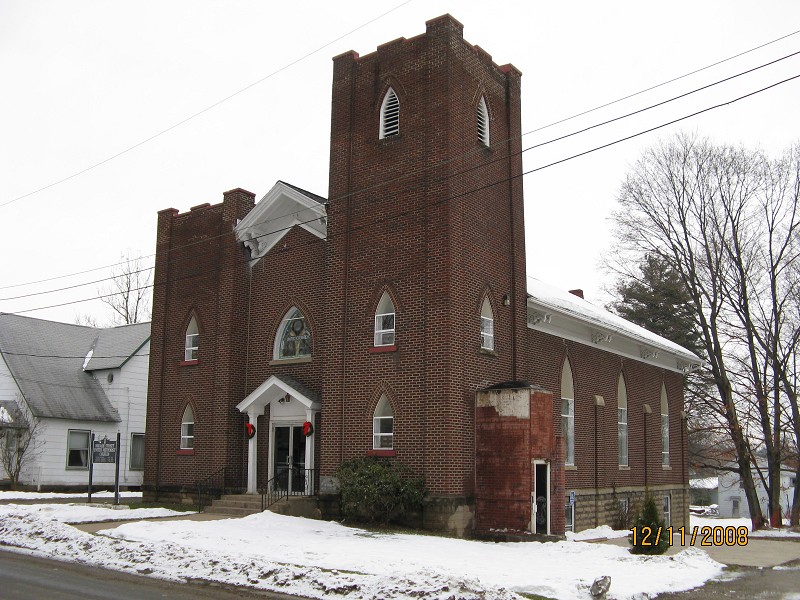| CHURCH TYPE INFORMATION | ||
|---|---|---|
Name |
Neo-Medieval Gothic |
|
General Range |
1910-1930 |
|
| HISTORIC OVERVIEW OF THIS STYLE |
The Neo-Medieval Gothic is an ecclesiastical building type that was introduced very early in the 20th century but was more prominent between the World Wars when it was the dominant mode of ecclesiastical construction. The most important feature of the type is the use of castle-like elements such as castellated towers and narrow lancet windows. The exteriors are almost universally longitudinal in orientation, almost always with one or two towers on the main gable end. The towers rarely support a spire, particularly after World War I. The interior can include the 3-part interior configuration of the Gothic Revival movement (narthex, nave, and chancel), but often the choir is located inside the chancel behind the pulpit. |
| UPDATE |
If you have additional information or corrections to the existing information, send an email to info@preservationerie.org.
|
| EXAMPLE |
|
| HISTORIC CHURCHES OF THIS TYPE | ||
Municipality |
Name |
Address |
Union City Borough |
||
